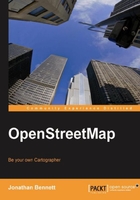
You don't have to map anything yourself to make use of OpenStreetMap data, so why should you do any mapping yourself?
It's fun! Mappers tell stories of finding footpaths less than a mile from their house or workplace that they didn't know existed. Surveying has taken mappers to places they'd otherwise never have visited, and made them appreciate their local area in a different way.
The area you need may not have been mapped in OpenStreetMap yet. While urban areas in Western Europe have extensive coverage, more rural areas in those countries or places elsewhere in the world may still not have been mapped. The project mostly relies on volunteers, and less densely populated areas get mapped at a slower rate. Surveying the area yourself, at whatever level of detail you require, is easy to do. If you have a commercial project that requires mapping, you could pay a professional surveyor to do the work, which may be more cost-effective in the longer term than paying license fees for a proprietary database.
You may be interested in features that no one else has mapped yet. An area may have its roads extensively mapped, but not have any post boxes, car parking, or retail outlets mapped. If you add those features, you may find other mappers start adding them in other areas, and that the features you add to the database are kept up-to-date by the community. You could get back more from the project than you put in this way.
By contributing to the project, you're also contributing to the common good. The license used by OpenStreetMap means that any data in the database forms a commons, in perpetuity, and without restrictions. It puts accurate, customizable mapping within the reach of small, non-commercial groups, such as clubs and societies, charities and other voluntary organizations.